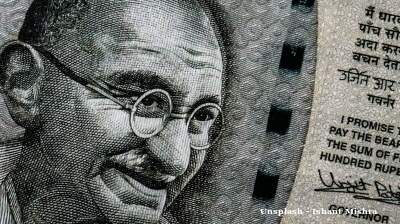One of the biggest questions that the BRICS members will discuss at the summit will be setting up an inter-BRICS payment system to bypass the dollar. The US decision to weaponise the dollar and seize Russia’s assets, previously considered to be sacrosanct, in its clash with Russia has unsettled central banks around the world. While de-dollarisation will take years to happen, the process is already underway.
And the situation is getting worse after the US changed tacks in December with the so-called strangulation sanctions that target individual banks, threatening them with secondary sanctions. Several Turkish and Chinese banks – two of Russia’s biggest partners – pulled out of Russia, cutting ties with their Russian clients, which has already affected the trade turnover.
At the same time, after the US’ Office of Foreign Assets Control (OFAC) slapped sanctions on the Moscow Exchange (MOEX) in June, the Central Bank of Russia (CBR) was forced to halt trading in the dollar and that has sparked a yuan liquidity crisis, as the Chinese currency is the main foreign exchange vehicle following the yuanisation of Russia’s economy in 2022. Russia’s financial elite held a panicked meeting after these sanctions and concluded the only action open to them was to adopt some sort of digital solution.
The international repercussions of these developments are already visible. The dollar's share in global reserves is already at a 30-year low and is continuing to fall. Russia already sold off almost all its dollar pre-war and now has circa $300bn in unfrozen reserve assets, roughly half and half in yuan and gold. Central banks around the world have also been increasing their share of the precious metal, driving gold prices to record highs.
China has followed Russia’s lead and has also been rapidly selling off its US T-bill holdings in the last two years, a signal that it is also preparing for a more aggressive stage in its relations with the US.
Over the past year, it has decreased by 1.2 percentage points to 58.22%, a level not seen since at least the end of 1995. The only other reserve currency that has seen a decrease during this time is the yuan, with its share falling to 2.14% from 2.45% a year earlier. The main beneficiaries have been non-reserve currencies, whose popularity among central banks increased by 0.63 percentage points over the year, reaching 4.25%. The last time their share was higher was in the third quarter of 2012, but at that time, the Australian and Canadian dollars were still included among them.
In mid-2021, China held around $1.1 trillion in US Treasury securities but that had figure fallen to around $835bn by mid-2023, the lowest level in more than a decade – a decrease of roughly 24% over two years.
And like Russia, China has been seeking to diversify its foreign exchange reserves away from US assets. The country has shifted its focus toward towards gold, the euro and investments in other currencies and commodities.
Russia and China have also switched to settling almost all their $186bn in the 1H24 of trade in national currencies, something they can do because their trade balance is fairly flat. Moreover, in an extreme move that underscores the depth of the fears, Russia and China will revive barter trade for the first time in 30 years this autumn and abandon money completely, to avoid exposure to US sanctions on their banking systems.
In general Putin has said that Russia now settles at least three quarters of its trade with China in national currencies and 85% of its trade in the Commonwealth of Independent States (CIS). It has reduced its trade turnover with unfriendly countries to the mid-teens as a share of total trade, but even some of those customers pay for their gas in rubles under the gas-for-rubles scheme the Kremlin introduced in 2022. Russia continues to enjoy residual sales of oil, gas and other raw materials such as fertilisers and uranium with the EU, which is unable to sources these inputs from anywhere else.
In this context it would be far simpler to switch to a nominal non-dollar unit of currency, opening the path to the introduction of a BRICS coin of some sort as the currency of mutual trade.
Russia is clearly preparing for this and has rolled out a raft of legislation to regulate digital currencies since the start of this year. In summer the CBR introduced trials of its digital ruble in the Russian banking sector and in September it ran a trial of settling an international trade deal using cryptocurrency as the payment means for the first time.
Selling the idea to other countries will be more difficult, although most countries of the Global South have expressed interest in the idea, and suggested the blockchain based BRICS system in March.
"We believe that creating an independent BRICS payment system is an important goal for the future, which would be based on state-of-the-art tools such as digital technologies and blockchain. The main thing is to make sure it is convenient for governments, common people and businesses, as well as cost-effective and free of politics," Kremlin top foreign policy aide Yury Ushakov said in an interview with TASS.
The coin will be called “BRICS Pay” and is simply a new cryptocurrency coin, but rather an analogue to the SWIFT messaging system that allows for international payments, Ushakov said, that allows for transactions in national currencies, but in a digital form. The system will unite digital versions of the ruble, yuan, rupee, etc., whose creation is also anticipated in the very near future. However, experts say that the system is unlikely to appear any time before 2028 at the earliest.
Features

Indonesia's $12bn stimulus play
The coordination between the Finance Ministry and the presidency signals tighter executive cohesion under President Prabowo’s leadership, contrasting with the cautious fiscal stance of prior administrations.

COMMENT: For Asia, dealing with Europe isn’t about achieving success; it’s about concealing failure
To be taken seriously in Asia, Europe must rediscover the courage to deliver, not merely declare. Asia has moved on to execution. Europe is still editing its initial policy draft.

Washington has a new focus on a Caspian energy play
For most of the last three decades since winning independence, Central Asia has been a bit of a backwater. Not any more. The Trump administration is becoming more focused on Turkmenistan's vast gas reserves and can smell money and power there.




